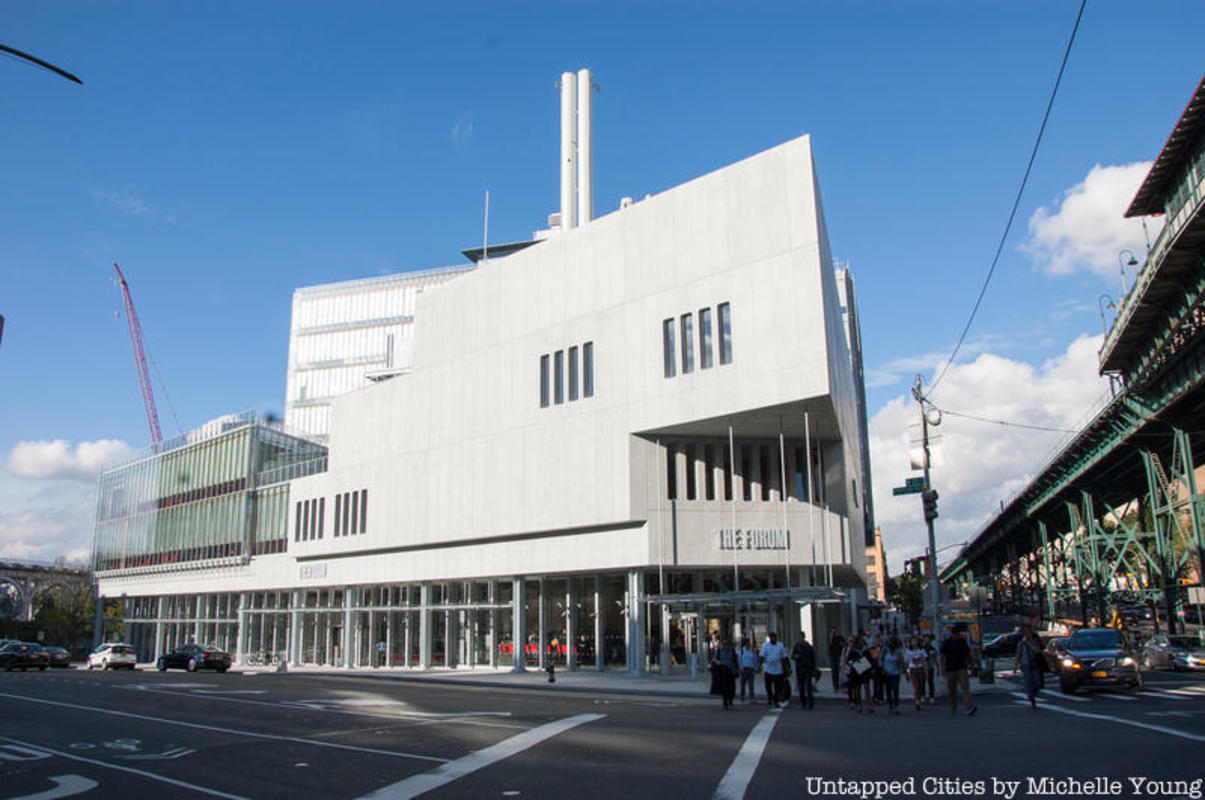On Wednesday, a star-studded cast of Columbia University leaders and local community luminaries officially opened The Forum, the third building in the new Manhattanville campus on 125th Street. Designed by Renzo Piano Building Workshop, The Forum is intended to symbolize and physically represent many of the ideals the university hopes to promulgate for the next century: openness, exchange of ideas, and engagement with the community. The 56,000 square foot building will be home to Columbia World Projects and The Obama Foundation Scholars, and is capable of hosting large conferences with an auditorium, extensive meeting space and a 4,200 square foot ground floor café and gathering area.
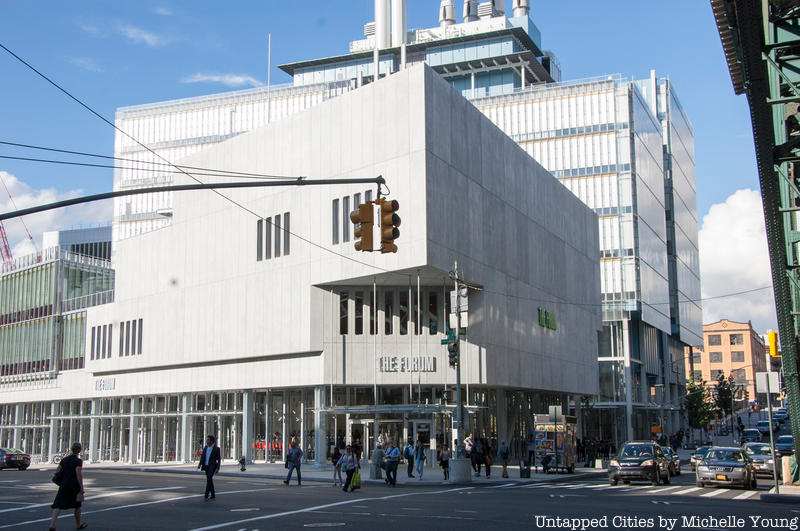
At the opening event, Columbia University President, Lee Bollinger, acknowledged the long history of building campuses at the university, from the university’s original location in Trinity Church, to midtown Manhattan at the current Rockefeller Center site, to Morningside Heights, to his own 17-year effort to build the new Manhattanville campus, which he described as “only a part of the long trail of efforts to create and pass on to succeeding generations.” Bollinger likened the triangular shaped building and plot at the corner of Broadway and 125th Street to a ship, and passed the torch to Renzo Piano at the opening proclaiming that “the ship is ready for navigation.”
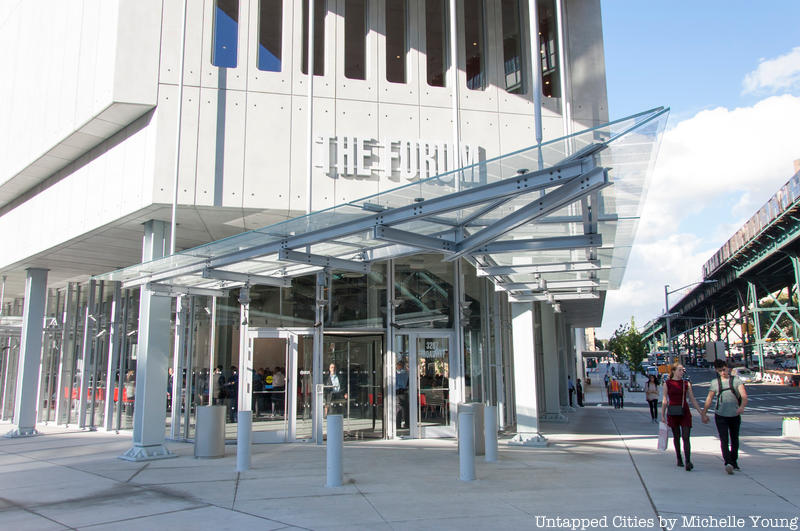
Transparency was a key design criteria for The Forum, with clear, floor to ceiling ground floor windows that look out onto the other buildings, the Lenfest Center for the Arts and the Jerome L. Greene Science Center, and the street. Mary McGee, Provost and Vice President of Academic Affairs at Columbia University said the Forum represented “Columbia’s future and its engagement with the world,” with an aim to “include and engage the winder community in innovation and research,” and to drive “change through collaboration and education.” Piano told the audience that transparency is not about aesthetics, “it’s about the essence.” And to that end, the University intends for it to be a place where hard discussions can be had, tacitly acknowledging the challenging current global climate.
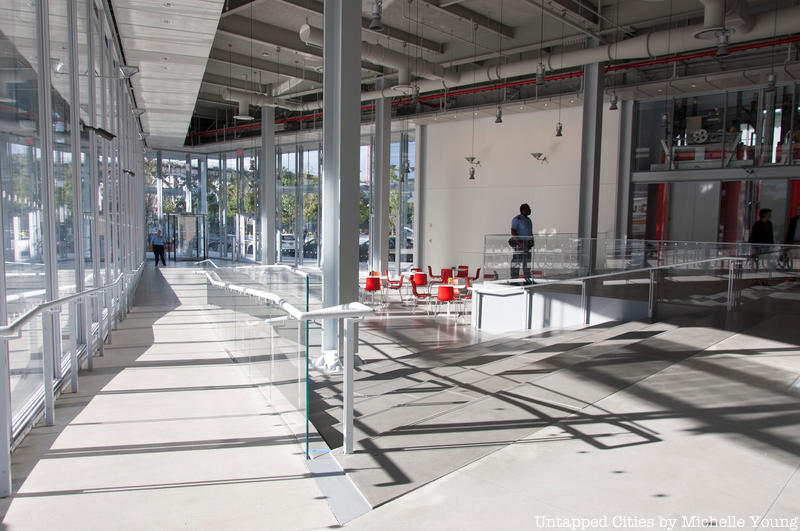
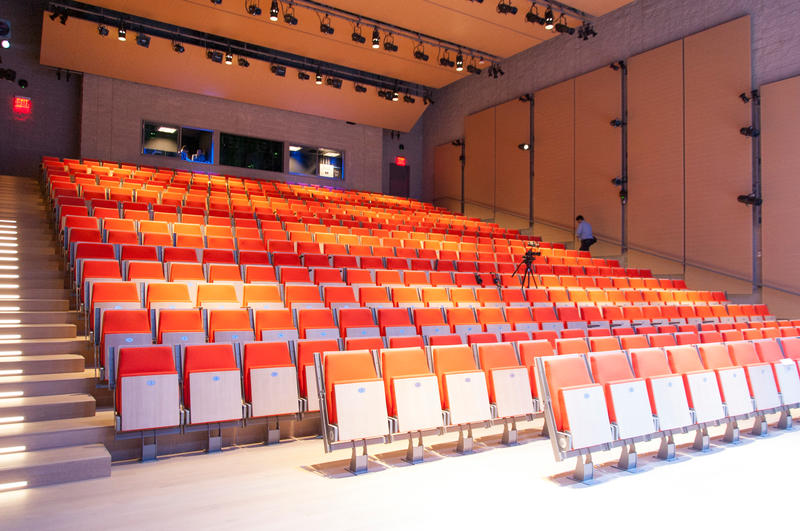
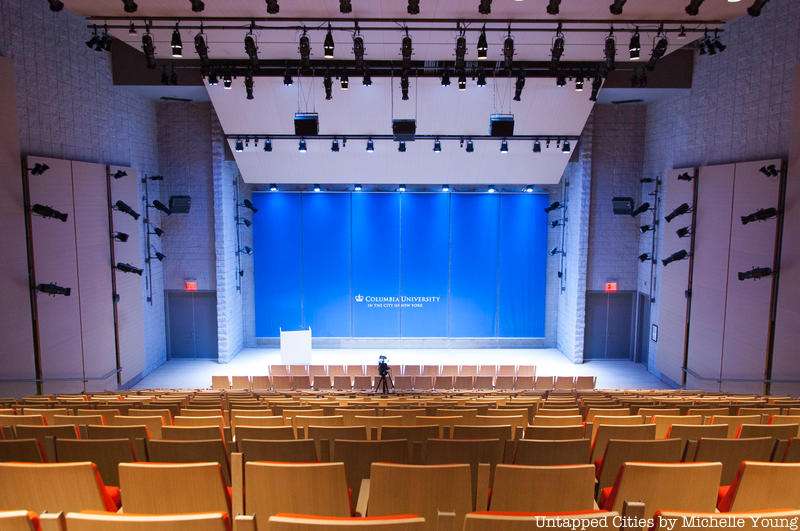
The spaces are light-filled, free-flowing and happy – full of oranges and reds – similar to the interior decor in the Jerome L. Greene Science Center. Even the elevators are a bright red. Piano said of this project, “It’s a big miracle…When you put together art, science and community, that’s humanism. I’m Italian. I’m a romantic. That’s the big essence of a big university, to be a humanist(ic) place.” It is hoped that the public will feel be comfortable passing in from the sidewalk or the town square that sits between the three new buildings, and into The Forum to take advantage of its cafe, free Wifi, and seating space.
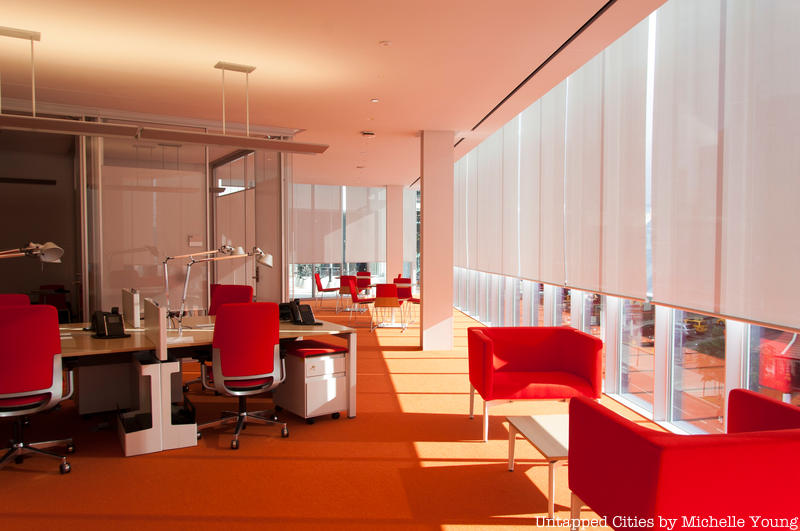
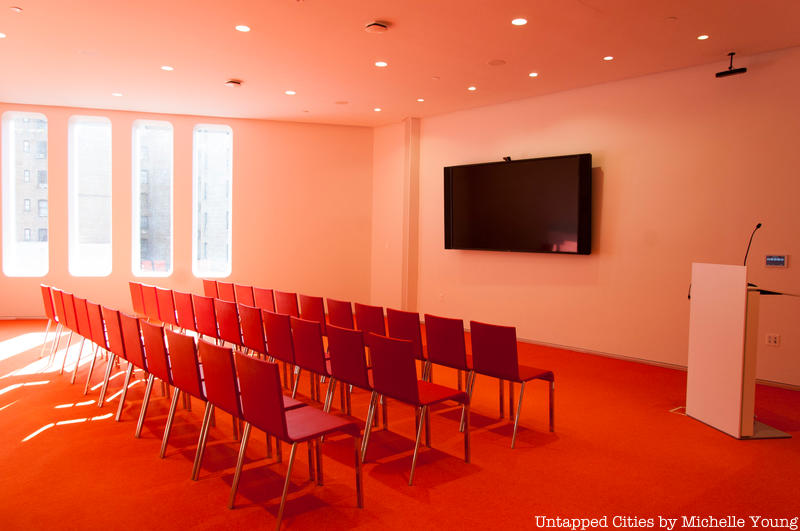
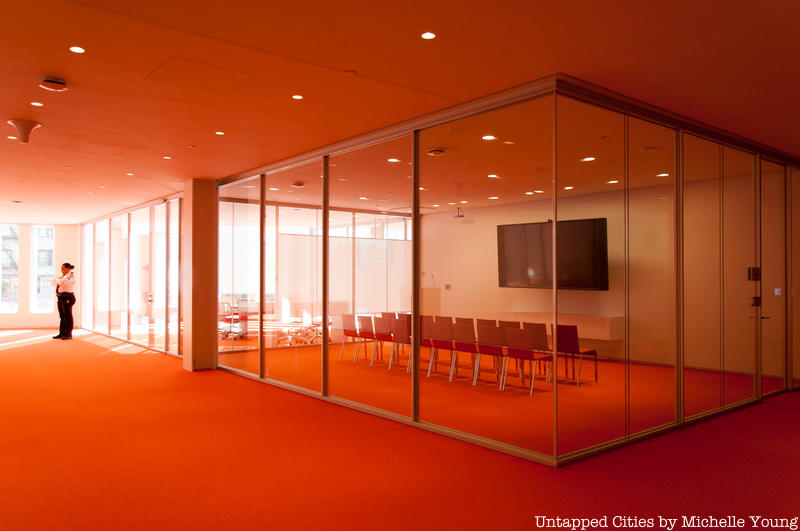
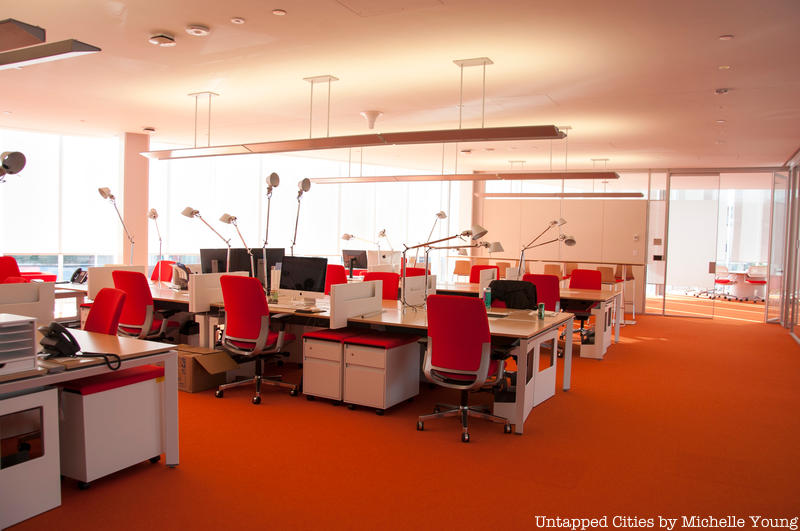
The first conference What We CAN Do When There’s Nothing To Be Done: Strategies for Change, begins today, hosted by the University’s Center for the Study of Social Difference and Women Creating Change, and in November will be Posing Modernity: The Black Model from Manet and Matisse to Today, in conjunction with an exhibition at the Lenfest Center for the Arts’ Wallach Art Gallery. After the first year of operation, the local community can reserve the space for their use.
Here are a few more photographs of The Forum, starting from the rooftop terrace:
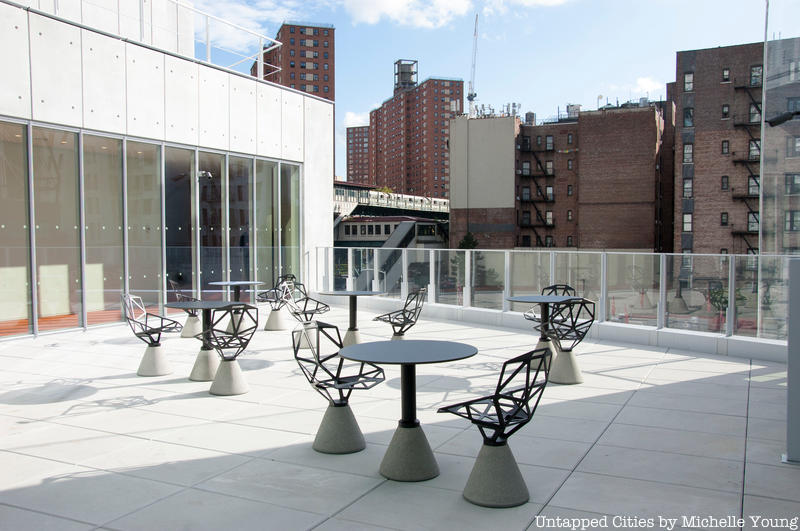
The prow of the building:
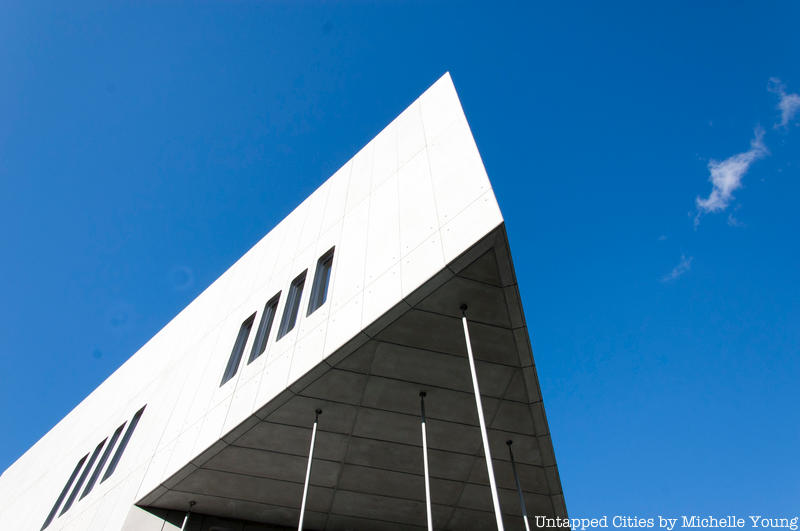
The reverse stepped facade is reminiscent of both the Lenfest Center and the Whitney Museum:
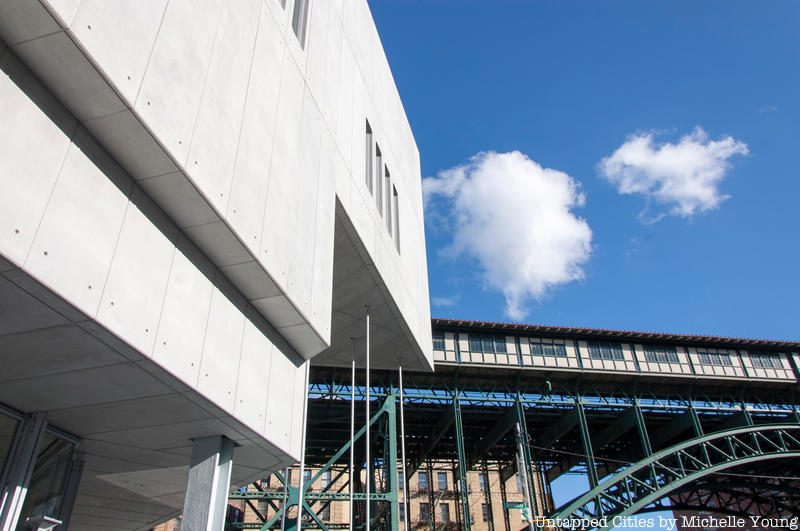
Bike racks along Broadway:
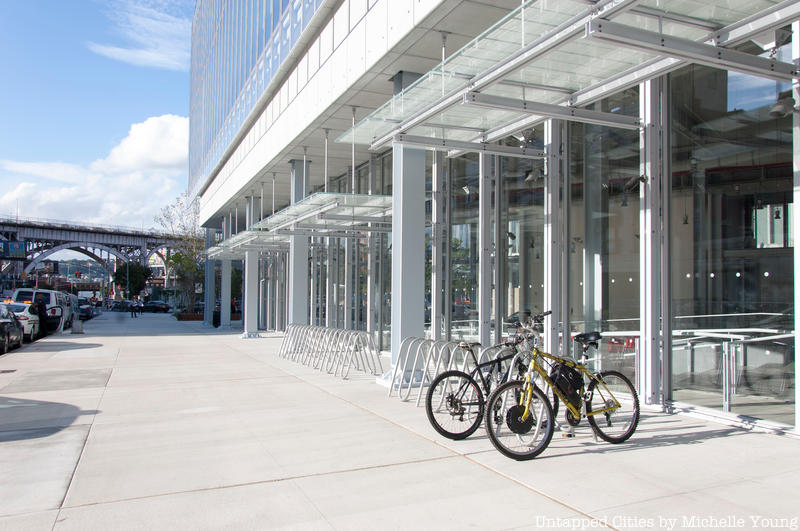
Café seating:

Entrance and security:
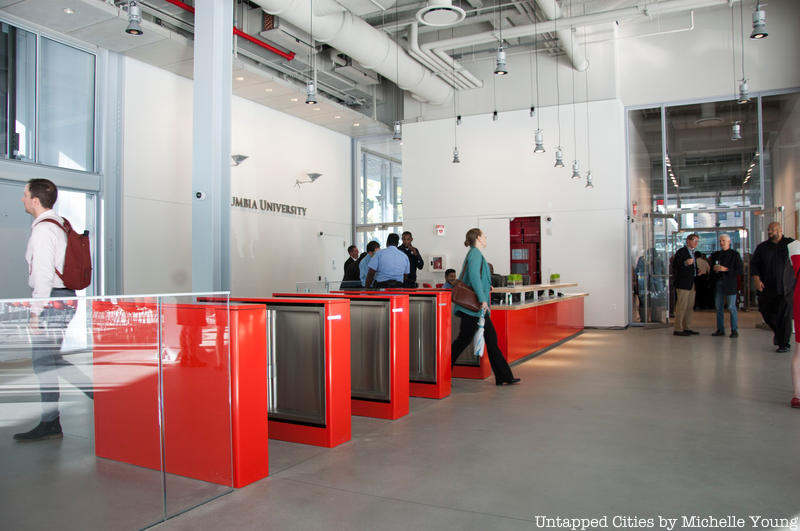
Next, check out the first two buildings in the Manhattanville Campus that were completed. Discover 17 off-the-beaten-path things to do at Columbia University and read about the Secrets of Columbia University.
Columbia University Opens New Renzo Piano Building "The Forum" in Manhattanville
Michelle is the founder of Untapped New York. She is the author of Secret Brooklyn: An Unusual Guide, New York: Hidden Bars & Restaurants, and Broadway. She is a graduate of Harvard College in the History of Art and Architecture and holds a master’s degree in urban planning from Columbia University Graduate School of Architecture, Planning and Preservation, where she is an Adjunct Professor of Architecture. Official Website






